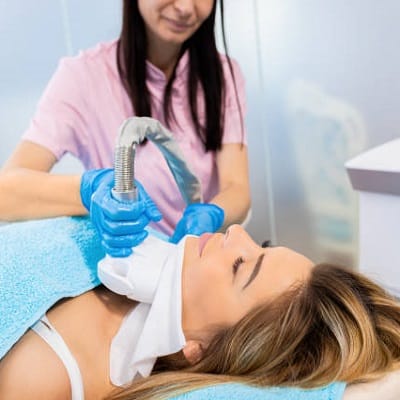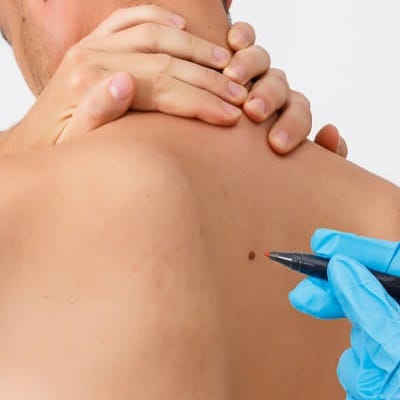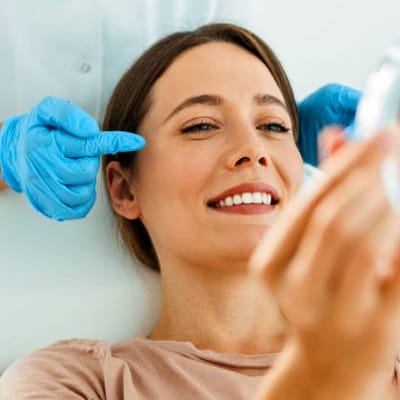Dimpleplasty in Islamabad also known as dimple surgery is one of the most popular forms of cosmetic surgery. Whether you want an enhanced natural look of a smile or just cannot get enough of the charm that comes with aspects like dimples. In this blog, we will discuss what is Dimpleplasty in Islamabad. What is the recovery time for Dimpleplasty? How it works.
What Is Dimpleplasty?
Dimpleplasty is an operation that is performed for people who want to have small dimples on the cheeks. Smile wrinkles are commonly seen when people smile and appear similar to small pits in the cheek muscles. The overall procedure is quite brief and usually lasts 20 to 30 minutes during which local anesthesia may be given. The majority of surgeons perform this surgery to make both cheeks develop dimples.
How Is Dimpleplasty Performed?
The surgeon maps the exact location of dimples on the skin as the first step. Following this technique, using a local anesthetic, the surgeon invokes a small incision inside the cheek and then proceeds to place a stitch or suture, to create the etched scissor dimple. This stitch tightens and pulls down on the skin to make that little dent appear whenever you are smiling. In several years the skin gradually forms a scar which gives the area a natural and permanent dimple shape.
What is the Recovery Time for Dimpleplasty?
A benefit associated with Dimpleplasty is that there are minimal after-effects that require the patient to spend a lot of time recovering. Unlike traditional operations, the procedure is quite short and not very invasive. Here’s what to expect in terms of recovery:
Immediate Post-Procedure:
In fact, after the treatment, you may feel pain and find the treated area swollen and red. This is normal and normally resolves within 48-72 hours. Certain patients also claim to feel some sort of mild pain.
First Few Days (Days 1-3):
During the first days after the surgery, you can still slightly feel the soreness and stiffness in the area where the dimples are made. During this period, inflammation will occur, making the newly formed dimples appear more pronounced than usual.
One to Two Weeks:
The redness and swelling become almost negligible, that is within one week to 10 days after treatment. The dimples will appear natural but they will still be apparent even when you are not smiling.
Three to Four Weeks:
After the first two weeks, the dimples will begin to smooth out and after a month or so, the dimples will look more like natural dimples, appearing only when you smile.
Tips for a Smooth Recovery:
There are certain measures that people can take after the surgery to ensure that the person has gotten the best result after the surgery.
Follow Post-Operative Instructions:
The surgeon will give you step-by-step guidelines on how you should take care of the operated area.
Keep the Area Clean:
The patient must be very hygienic while mincing food in the mouth. Use a mouthwash recommended by your surgeon to help minimize the chances of infection in the treated area.
Avoid Strenuous Activities:
Dimpleplasty is a minor surgery but it is still necessary to avoid strenuous activities and don’t put pressure on the healing tissues. It is important to avoid any strenuous exercise for about a week.
Watch Your Diet:
Ensure that for the first few days, you take soft foods so as not to rub the inside of your cheeks that the stitches are made on. Spices or acids in foods can cause discomfort or irritation, so they should be avoided.
Apply Ice Packs:
Apply an ice pack outside the cheeks if you get swelling. Be careful not to press too hard to avoid putting pressure on the treated area.
Avoid Smoking and Alcohol:
Tobacco smoking and alcohol enhance the risk of poor healing and infection. Both should be avoided for at least one week after the procedure has been done.
When to Consult Your Doctor
Many other surgical procedures are significantly less safe than a Dimpleplasty, which comes with certain inherent risks. Mild skin reactions such as swelling, bruising, and redness may occur but should disappear in a few days. Nonetheless, if you feel severe pain, redness, heat, or pus, or the swelling lasts longer than three days, consult your doctor.
Final Thoughts:
Dimpleplasty in Islamabad can be a way to make improvements to facial aesthetics without the need for a long time to recover. Most patients regain full health in two weeks or less and get the natural, charming, and attractive dimples on their cheeks to boost their smile. The period of healing can be different in every person but regarding the outcomes, it is enough to follow the post-procedure instructions and take care of the teeth. If you want to meet with SKN Cosmetics‘ best aesthetic physician in F-7 Islamabad and discuss your concerns about dimples, you are advised to visit the clinic.










